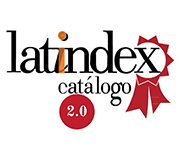La simbiosis industrial: un ensayo dialógico
DOI:
https://doi.org/10.20983/novarua.2015.10.2Keywords:
simbiosis industrial, medio ambiente, formulación eclécticaAbstract
La inevitabilidad de la generación de residuos y la necesidad de su disposición, reciclado, reúso o preservación demandan la implementación de estrategias tendientes a mejorar y preservar el medio ambiente mediante la implementación de sistemas que coadyuven en este proceso como la simbiosis industrial, a través de la cual se puede obtener una economía sustentable y cuyo éxito recae en la ampliación de nuestro conocimiento acerca de cómo y por qué la gente elige interactuar entre sí de una u otra manera y cómo sus decisiones colectivas afectan nuestra biósfera y sus ecosistemas al paso del tiempo. El presente trabajo parte de una comprensiva revisión de literatura mediante el análisis de artículos científicos, cuyo propósito es contrastar las posturas a favor de la simbiosis industrial y aquellas que plantean serias dudas de su aplicación, así como la conciliación entre ambas más allá de una simple formulación ecléctica.
References
Andersen, M. S. (2007). An Introductory Note on the Environmental Economics of the Circular Economy. Sustain Sci (2), 133-140. Available from: http://dx.doi.org/110.1007/s11625-11006-10013-11626
Batten, D. (2009). Fostering Industrial Symbiosis With Agent-Based Simulation and Participatory Modeling. Journal of Industrial Ecology, volumen 13, Issue: 2, pp. 197-213. ISSN: 1530-9290
Chiu, A., & Yong, G. (2004). On the Industrial Ecology Potential in Asian Developing Countries. Journal of Cleaner Production (12), 1037-1045. Available from: http://dx.doi.org/1010.1016/j.jclepro.2004.1002.1013
Cohen-Rosenthal, E. (2004). Making sense out of industrial ecology: a framework for analysis and action. Journal of Cleaner Production, volumen: 12. Issue: 8. Pp. 1111-1123.
Cote, R. P., & Cohen-Rosenthal, E. (1998). Designing Eco-industrial Parks: a Synthesis of Some Experiences. Journal of Cleaner Production (6), 181-188.
Desrochers, P. (2004). Industrial Symbiosis: the Case for Market Coordination. Journal of Cleaner Production (12), 1099-1101. Available from: http://dx.doi.org/1010.1016/j.jclepro.2004.1002.1008
Fernández, I., & Ruiz, M. C. (2009). Descriptive Model and Evaluation System to Locate Sustainable Industrial Areas. Journal of Cleaner Production (17), 87-100. Available from: http://dx.doi.org/110.1016/j.jclepro.2008.1002.1011
Norton, B., Constanza, R., & Bishop, R. (1998). The Evolution of Preferences Why “Sovereign” Preferences May not Lead to Sustainable Policies and What to Do About It. Ecological Economics (24), 193-211.
Perry, P.-J., & Boon, O. (2004). Applying Ecosystem Concepts to the Planning of Industrial Areas: a Case Study of Singapore’s Jurong Island. Journal of Cleaner Production (12), 1011-1023. Available from: http://doi.dx.org/1010.1016/j.jclepro.2004.1002.1028
Roberts, B. (2004). The Application of Industrial Ecology Principles and Planning Guidelines for the Development of Eco-industrial Parks: an Australian Case Study. Journal of Cleaner Production (12), 997-1010. Available from: http://dx.doi.org/1010.1016/j.jclepro.2004.1002.1037
Sagoff, M. (1998). Aggregation and Deliberation in Valuing Environmental Public Goods: a Look beyond Contingent Pricing. Ecological Economics (24), 213-230.
Tudor, T., Adam, E., & Bates, M. (2007). Drivers and Limitations for the Successful Development and Functioning of EIPs (Eco-industrial Parks): a Literature Review. Ecological Economics (61), 199-207. Available from: http://dx.doi.org/110.1016/j.ecolecon.2006.1010.1010
Downloads
Published
Issue
Section
License
All contents of the electronic edition of the journal are distributed under a license and distribution "Creative Commons Attribution-Noncommercial-ShareAlike 4.0 International" (CC-BY-NC-SA). You can see from here the informative version of the license.
Those authors/publications as having this journal agree to the following terms:
a) Is allowed and recommends authors / as disseminate their work via the Internet (p. eg .: institutional telematic files or on their website), which can produce interesting exchanges and increase appointments of the published work. (See The Effect of Open Access).












